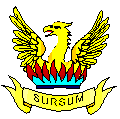Politically interfered
with
Underfunded
So what else is new?
Some observations, in no particular order.
Our summer holidays are at Christmas and the
school year is from late January to end November.
Four terms, about 10 weeks each. Best time to apply
for jobs is September on. All jobs advertised in
Education Gazette- see links on my page.
Most jobs are still permanent but there is a
growing trend to appoint 'long term reliever' posts
for 12 months. Very worrying!
Teaching in NZ has seen many changes in
the last 100 years but many basics stay:- kids come
to school every day for about 37(secondary schools)
or 39 (primary) weeks a year, arranged in classes
by age and many secondary schools stream by
ability
Most children go to the state schools-
these are free but parents are 'encouraged' to pay
a 'donation' of around $NZ100 ($US50) a year. State
schools are run by a board of trustees elected from
the area with staff and student members and the
Principle as a member.
There is also a strong private sector. Some
distinctions are changing- some private schools are
taking state pupils, many state school take
fee-paying students, boarders from rural areas or
from abroad or 'Homestay' students from Asia, who
pay fees to attend school and live with local
families My school, Mount Roskill Grammar School,
is popular with homestay students. It is very
multicultural, we usually have students born in
more than 50 different countries- 57 last year.
At the moment schools can choose who they
accept. Most schools operate a zone policy- anyone
inside a local area can attend. Some state schools
in cities will only take students who meet their
entry criteria. This may change due to parent
pressure to be able to send their children to
nearby schools.
Primary schools are age 5 to 11, intermediates
are 11 to 13 and secondary 13 to 18. Some
variations, i.e. the intermediate pupils may be
with the primary or reach secondary early,
especially in rural areas where there are not
enough pupils for three separate schools.
Primary and Intermediate are arranged in classes
by age, each class has one generalist teacher for
the whole year. Secondary classes are also by age,
usually streamed by ability and are taught separate
subjects by different specialist teachers in 5 or 6
periods a day.
There are two exam systems in secondary/tertiary
education.
*Traditional exams- School Certificate at 16,
Sixth form certificate at 17 (less important),
Bursary at 18 is for University entrance.
*Unit Standards. Students demonstrate
proficiency at given tasks and accumulate points
towards qualifications. In theory these will be
transportable across all education providers-
schools, colleges etc. and people will be able to
go on learning new skills and accumulating
qualification points throughout their lives. Many
jobs now expect a special qualification for the job
plus a certain total of points to show a general
education level.
In practice secondary school teachers are
resisting the introduction of unit standards
because:
a) workload issues. We feel we are more than
busy enough without a whole new system on top of
what we have.
b) Many teachers feel that giving students a
series of small steps to climb stifles ambition-
they will do just enough to pass and no more and so
lose interest in deeper understanding.
Another controversial innovation is 'Bulk
funding'. Schools can opt to run their own finances
and be totally responsible for their budgets-
miniature businesses. Heads and Boards of trustees
love it, teachers less happy since older teachers,
higher on the salary scale, are less cost effective
than cheap younger teachers and so find it harder
to get/ keep jobs.
Teaching jobs from the New
Zealand Education Gazette.
Look for "Excellence
-NZ education directory". It lists all schools/
education establishments in NZ. The 1998 edition is
now (Jan 99) available at reduced price, 1999 due
mid year. The site is a mine of information on all
aspects on NZ education .
|


![]()

